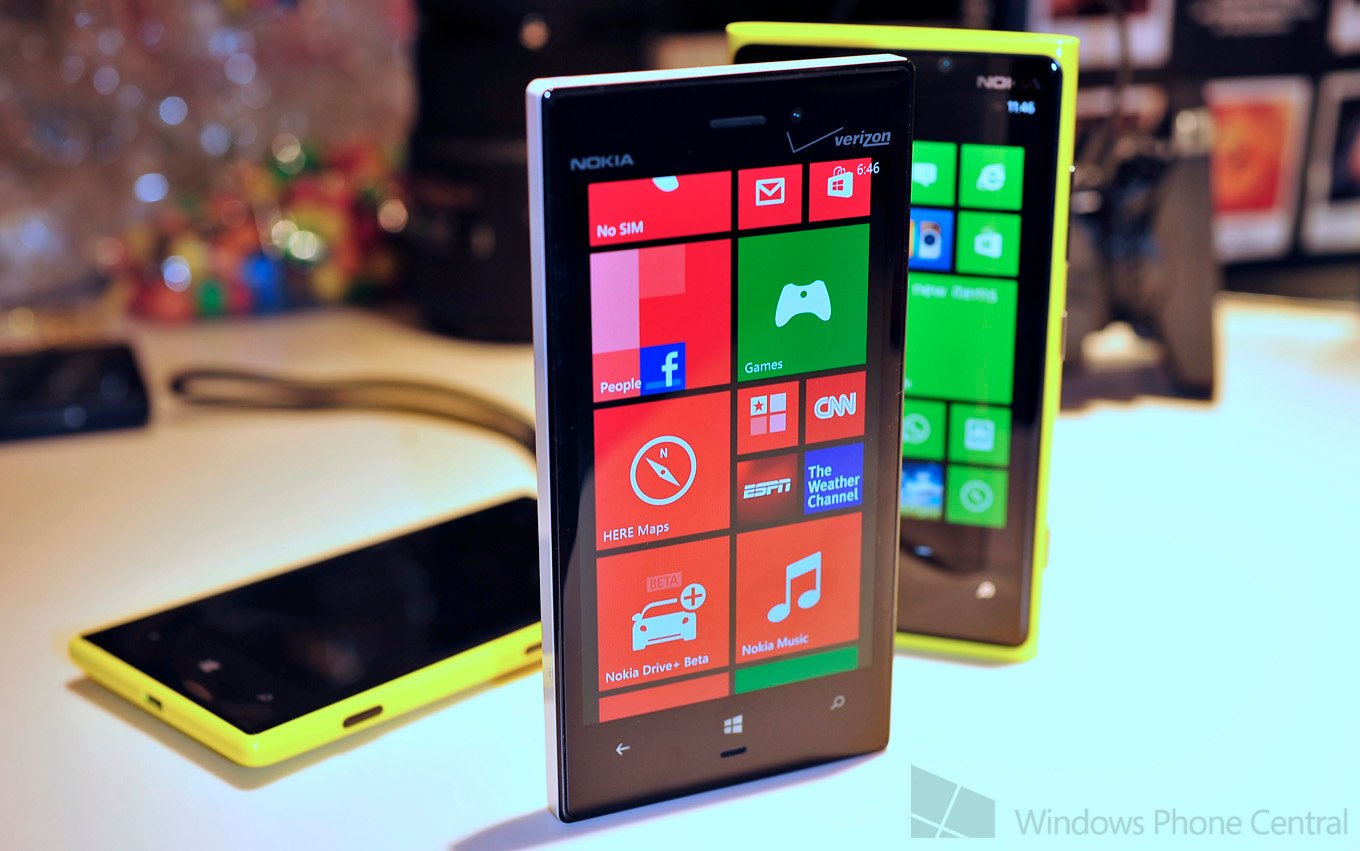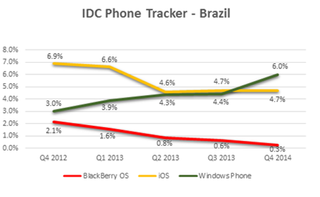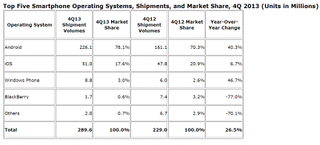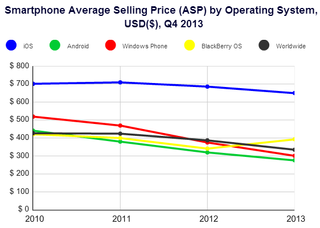IDC – Windows Phone sees 91% surge for 2013 shipments, now second most popular OS in Brazil

Windows Phone continues its ascent in the global smartphone race, at least according to shipment numbers released by IDC. While the increase in global market share continues for Microsoft’s mobile OS, perhaps the more interesting story is in individual markets.
IDC’s new numbers show that Windows Phone “posted the largest increase for both the quarter (46.7%) and the year (90.9%)” when compared to iOS and Android. That’s down from Q3, where shipments were pegged at 156%, but is line with year-end performance. The take away is that Microsoft has nearly doubled their growth.
Likewise, Nokia’s dominance of the Windows Phone market is confirmed again at that 90% number, which has had multiple corroborations at this point.
IDC estimates that 33.4 million Windows Phones were shipped in 2013, with a tepid 3.3% global market share. Android, by contrast, had 793.6 million phones shipped with the OS on board and a dominating 78.6% market share. The more interesting side story for Android is the increase in forked-Android devices, which is actually not good for Google and the OHA.
#2 in Brazil

Source: IDC Q4 2013
Microsoft is boasting the new IDC numbers themselves, specifically in Brazil. There, Windows Phone has had positive growth for four straight quarters, with a 1.6 percentage points increase compared with the previous quarter, reaching 6% total market share in that country.
With those stats, Windows Phone is now the second most popular OS for Brazil. That reflects an earlier claim by the IDC that, overall, Windows Phone is the second most popular OS in Latin America, mostly due to Mexico.
Get the Windows Central Newsletter
All the latest news, reviews, and guides for Windows and Xbox diehards.
The success in Brazil also reflects shipments for India, according to the IDC last year and in Vietnam. Windows Phone's long term success is evidently tied to non-US markets, something often overshadowed in the tech press.
Growth, but still being dominated

Source: IDC Q4 2013
However, while Windows Phone OS is growing, there is still no slowdown for iOS and Android. IDC reports the following in terms of their shipments:
“Android and iOS accounted for 95.7% of all smartphone shipments in the fourth quarter of 2013 (4Q13), and for 93.8% of all smartphone shipments for the year. This marked a 4.5-point increase from the 91.2% share that the two platforms shared in 4Q12, and a 6.1-point increase from the 87.7% share they had in 2012.”
There’s no way to spin that positively. While the overall pie is getting bigger, due to the growth of emerging markets, Android and iOS are still doing very well. However, the IDC does point out that the years of ‘double digit growth’ are starting to peter out as the world trades in flip phones for smart ones.

Source: IDC Q4 2013
Samsung was the strongest performer, accounting for nearly 40% of Android shipments. The iPhone, while having positive growth for quarter (6.7%) and the year (12.9%), has had their lowest recorded instance of said growth. The reason should be familiar: the rise of emerging markets and Apple’s insistence in ignoring it, instead catering to the high end crowd.
BlackBerry is of course on a downward spiral with a loss for the quarter (-77.0%) and for the year (-40.9%), and the terrible realization that the legacy BB7 outpaced BB10 towards the end of 2013.
Overall, the story once again is a familiar one. Windows Phone continues to grow worldwide, but it’s still far behind iOS and Android.
In a previous report, the IDC suggest that Windows Phone could reach 10% market share by 2017.
Source: IDC, Microsoft Brazil; Thanks, André H. and GuilhermeM., for the Brazil tips

Daniel Rubino is the Editor-in-chief of Windows Central. He is also the head reviewer, podcast co-host, and analyst. He has been covering Microsoft since 2007 when this site was called WMExperts (and later Windows Phone Central). His interests include Windows, laptops, next-gen computing, and wearable tech. He has reviewed laptops for over 10 years and is particularly fond of 2-in-1 convertibles, Arm64 processors, new form factors, and thin-and-light PCs. Before all this tech stuff, he worked on a Ph.D. in linguistics, performed polysomnographs in NYC, and was a motion-picture operator for 17 years.